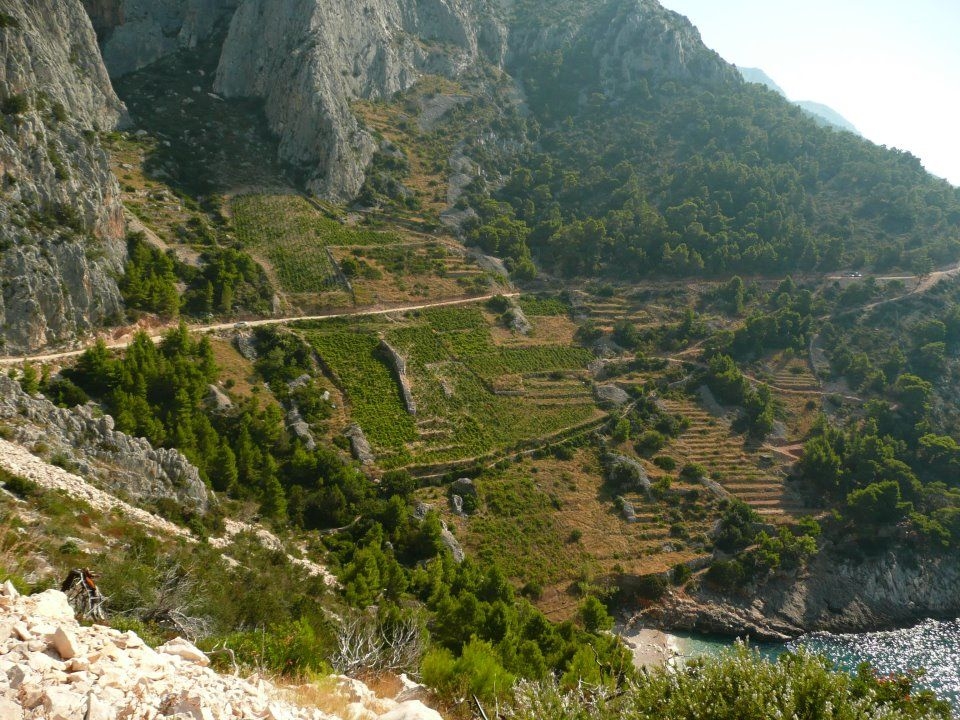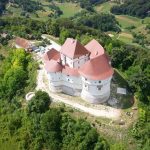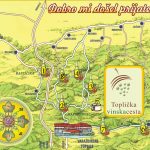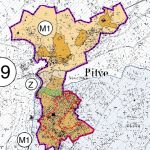One of Croatia’s most exciting and fastest growing tourist destinations, Central Dalmatia has a wine story to match, a tale of indigenous grapes, centuries of history, and the birthplace of one of the most grape varieties of all. Add to the mix the rise of a sophisticated wine bar culture in recent years, and increasingly innovative tours, including island hopping with bike and wine, and sail and wine, and there really is a comprehensive programme for the wine lover. So exciting is the wine scene here that a Master of Wine decided to up roots from London to make her own wine on Hvar – from Hvar indigenous grapes of course.
Where to begin? Perhaps on the islands, for there is much wine heritage to explore and a wealth of indigenous grape varieties to try. When the Ancient Greeks sailed into modern-day Stari Grad on Hvar exactly 2400 years ago, they brought with them olive trees and grape vines from their native island of Paros. Those grapes continue to grow today, and Hvar has seen grape cultivation through Greek, Roman, Venetian, Communist and democratic times. There is a fascinating wine story where that rich heritage is reflected through the modern-day growers.
The steep southern slopes of Hvar’s south side produce some of the finest Plavac Mali in the world, including one of Croatia’s most famous bottles, the Zlatan Otok Grand Cru. Zlatan is just one of a number of Hvar winemakers who have unified under the umbrella of the Hvar Wine Association, and other key players include Andro Tomic, Ivo Dubokovic, PZ Svirce and Ivo Caric. Tasting facilities are increasingly available, and the Hvar wine tour scene is very developed – Tomic, Zlatan, Caric and Dubokovic are the key players. Don’t miss some of the grape varieties only grown on Hvar – bogdanusa, mekuja, kuc and prc (white), darnekusa (red), the variety chosen by Jo Ahearne Master of Wine as she produced her first island rose in 2016.
Brac is another important wine destination as well, and although there are only three official winemakers, two of them are not to be missed. The Dalmatian wine revolution is perhaps best exemplified by the Stina winery in Bol, housed in the waterfront’s most impressive building, the 1903 first wine cooperative in Dalmatia. Don’t let the age deceive you – inside is the most modern equipment and outstanding tasting room, where one can try internationally award-winning wines, including my favourite, the white Posip. Further inland is Senjkovic, a lovely couple who are stamping their mark on the Croatian wine scene. From professional footballer to the first island sparkling wine, the Senjkovic experience is all about island tradition and youthful enthusiasm and innovation. Not to be missed. Solta and Vis also have their wine stories, but perhaps not so much in the spotlight as their more fashionable island neighbours, but both have their indigenous varieties – the white vugava on Vis, and Dobricic on Solta, a parent of Plavac Mali and Zinfandel.
Zinfandel? Yes, you heard it right, for here is Central Dalmatia’s greatest wine asset, something which was proved by researchers at the University of Davis in 2001, when it was proved that an indigenous Dalmatian variety called Crljenak Kastelanski, from the Kastela region between Split and its airport, had 100% matching DNA with the powerful American red. And so the world came to know that the Original Zinfandel comes from Central Dalmatia. Serious planting of Crljenak has ensued, and Kastela’s winemakers are getting organised with a nascent wine tourism offer, one which will only improve.
Spare a thought too for the Imotski region, which is slowly coming in from the cold, both due to improved infrastructure (the motorway and tunnel to the coast at Makarska) and the innovative winemaking efforts of winemakers such as Grabovac. The tongue-twisting white kujundzuja is king here, and indeed the Imota winery used to be the second biggest in former Yugoslavia with 20 million litres a year, but the planting of other native and international varieties has yielded excellent results.
As the winemakers of the region make progress, so too does the general wine scene. The first wine bar opened a decade ago in Hvar Town (3Prsuta), but the real revolution has been happening in Split after the opening of the excellent Paradox Wine and Cheese Bar. Others followed, and now Split has a very vibrant wine bar scene, an excellent opportunity to get to know Croatian wine better. And so too with wine tourism, and now a growing number of agencies are offering wine tours of varying quality – two of the best are www.secretdalmatia.com and www.hvarwinetours.com
Central Dalmatia is an outstanding region to visit – don’t forget to sample a glass or two along the way.
For full screen preview click here











